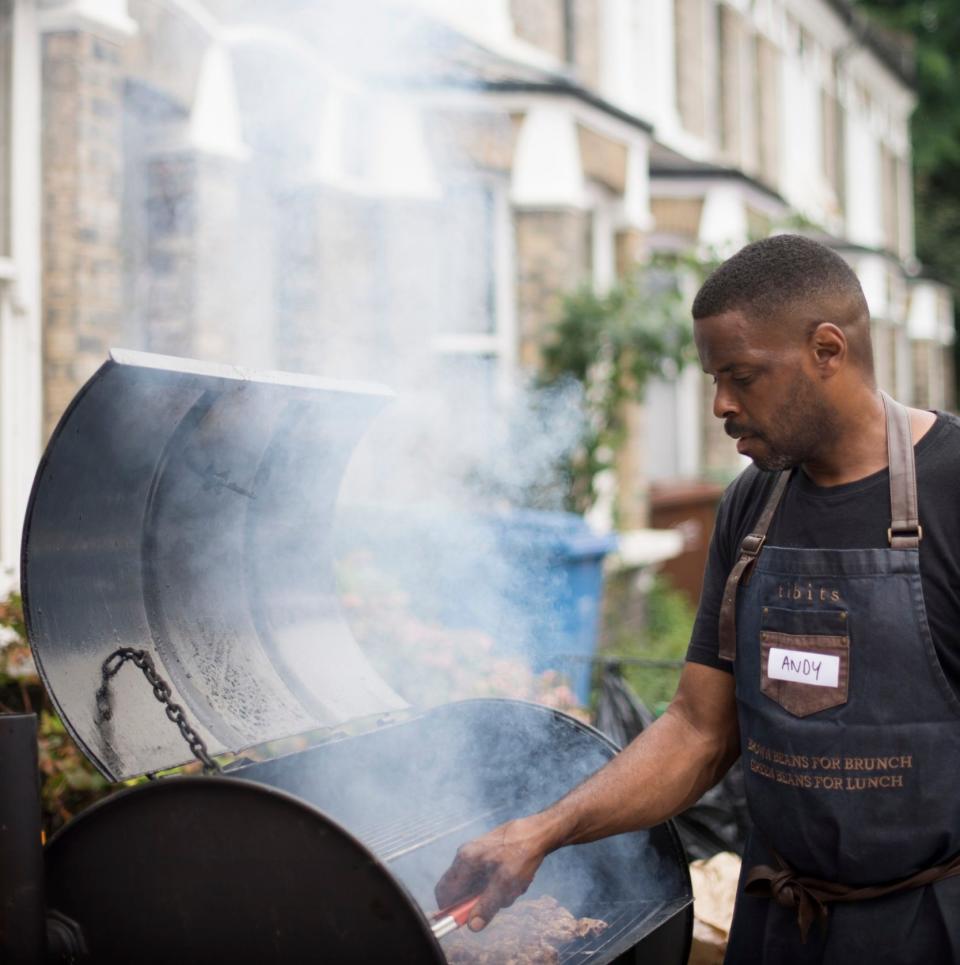You’ve Never Thought About Food – Or London – Like These Writers Did
The London Feeds Itself index explains a lot of what the book is about. Around 180 restaurants in the capital, whose recommendations have been woven throughout the book, are grouped by district. Under ‘Kensington and Chelsea’ there is only one entry (Panella, a Sicilian street restaurant on Golborne Road). Under “Brent”, there are 10.
Merton, Sutton and Hillingdon, Hounslow, Harrow and Barnet – these are the corners of London that Jonathan Nunn and his colleagues want you to visit, rather than the small plates of Soho or the white tablecloths of Mayfair. From momos (stuffed dumplings) from a Nepalese bakery in Uxbridge to cholent (beef stew) from a Jewish deli in Golders Green, by the end of London Feeds Itself I was convinced the capital’s best bites were the ones that I – food columnist, cookbook author and native Londoner – have yet to try.
Yet these recommendations are merely appendices to each of the 26 essays Nunn has collected, which constitute the real substance of the book. From housing estates to shopping centers to communal baths, they delve into communities and architectural spaces where food is central to local life. The 25 contributors here, ranging from journalists to cafe owners, talk about areas of London that are full of life but go largely unnoticed.
In other words, this book – now in its second updated edition – is not about the London food “scene”; the restaurants mentioned have mostly not been reviewed by mainstream media. Nunn, founder of the popular online food magazine Vittles, has long had a problem with the latter, whose restaurant reviews he considers elitist and boring.
His introduction suggests he still does: “In the months before the pandemic, when restaurants were temporarily closing, I looked at the last hundred reviews from eight national newspapers. Sixty-eight percent were in London restaurants, with 20 percent of those restaurants in Mayfair and Chelsea and a further 20 percent in Soho and Fitzrovia. That’s 40 per cent of restaurant reviews across the country being taken up by a few square miles of central London’s most expensive real estate, controlled by a handful of mega-landlords.”
In Nunn’s opinion, this district is not, far from it, the place where you can find the best cuisine in the capital. It’s a bit unfair, I think, to the many chefs in this particular square mile who have worked hard to earn their Michelin stars. Yet his recommendations have had the desired effect, to the extent that I now desperately want to visit, say, Uncle Wrinkle, a Chinese restaurant in New Cross where the salt and pepper eggplant apparently has a whiff of Cinnamon Graham.
London Feeds Itself, writes Nunn, is not a traditional food guide, but “a group effort in which the story of London is told by food writers, architectural writers, journalists, campaigners and even an MP” . The MP in question is, predictably, Jeremy Corbyn, who in an interview hails him, just as predictably, as “the country’s most famous allotment user”. Still, if you’re not inclined to find out what Jeremy does with his comfrey, you might want to move on to the next essay, a fascinating article by Ruby Tandoh about the Muslim-owned ice cream parlors that serve those Londoners “for whom the pub is not an option.” If you can make it to the end without going in search of a scoop of something cold and creamy, you have a stronger will than me.
Many of the essays offer snapshots of stories that I could read entire books about. Take for example the suburb of Hampstead Garden, whose evolution is told through the eyes of Claudia Roden, a cookbook author and veteran anthropologist, who remembers a butcher called Frohweins where “you could get unborn eggs – tiny baby eggs filled with some kind of milk.” . You know, the kind of thing you find in a shtetl.

Or take the vanished East London warehouses described by writer and activist Melek Erdal, where “hidden people” in “hidden spaces” worked and ate next to each other. Kurdish immigrants, including Erdal’s own family, took down their tools at lunchtime. “Bundles of clothes were cleared away,” she writes, “and the pattern-cutting counter became a makeshift table. Aunt Ayse from Gaziantep brought him a single-layer borek of chicken and potatoes, “kombe”. Ismail brought special olives and honeycomb that he had smuggled from his hometown, as well as his wife’s fresh kaymak. Dad ran to buy fresh bread from the local Christmas tree. Has an office lunch ever seemed further from a sad, expensive, loveless Pret soup?
But this is not a nostalgic book about a forgotten city. It feels full of life and urgency; it is about London “as it is today”. If you had to pick up London feeds itself in 30 years it would probably look like a time capsule from the 2020s, and the city would probably look very different. One would hope, however, that at least some of the restaurants, bakeries, and delis that Nunn’s book compels you to track down today would still be there, still bringing communities together, still feeding people.
London Feeds Itself is published by Fitzcarraldo/Open City, priced £25. To order your copy for £19.99, call 0844 871 1514 or visit Telegraph books
Broaden your horizons with award-winning British journalism. Try The Telegraph free for 3 months with unlimited access to our award-winning website, exclusive app, money-saving deals and more.
